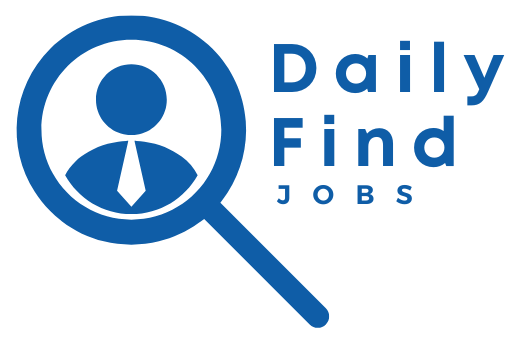Creating a personal development plan is essential for anyone looking to grow both personally and professionally. This roadmap helps you focus on what’s important, identify your strengths and areas for growth, and set achievable goals. Let’s dive into how you can create a plan that will guide you towards success.
Understanding the Importance of a Personal Development Plan
A personal development plan is crucial for anyone looking to achieve their personal and professional goals. It acts as a roadmap, helping you to navigate through the journey of self-improvement. With a structured plan in place, you can track your progress and stay motivated, which is essential for consistent growth.
Understanding its importance is key to utilizing it effectively. A well-thought-out plan allows you to focus on areas that need improvement and capitalize on your strengths. This deliberate practice is what separates wishful thinking from actionable steps towards success. By having clear steps outlined, you are more likely to remain committed to your personal growth journey.
Moreover, having a plan brings a sense of direction and purpose. It helps in prioritizing tasks and managing time more efficiently, which leads to achieving a balanced and fulfilling life. This sense of achievement boosts your motivation to continue embracing opportunities for development.
Reflecting on your plan regularly is essential. It ensures that the steps you’re taking are still aligned with your goals, allowing for necessary adjustments. This adaptability is a critical component in overcoming challenges and staying resilient in the face of setbacks.
Setting Clear and Achievable Goals
In the journey of personal development, setting clear and achievable goals is crucial. These goals act as a roadmap, guiding you towards your desired outcomes. To set effective goals, follow the SMART criteria: Specific, Measurable, Achievable, Relevant, and Time-bound.
Specific: Your goals should be clear and specific. Instead of vague wishes, have a detailed objective. For example, instead of saying, “I want to improve my skills,” specify which skill you wish to enhance, like “I want to improve my public speaking skills.”
Measurable: Ensure that your goals have criteria to measure progress. By quantifying your goals, you can track your development and stay motivated. If your goal is to ‘improve public speaking skills,’ set measurable milestones, such as participating in a certain number of public speaking events.
Achievable: Your goals should be realistic and attainable. Setting goals that are too far ahead can be discouraging. Acknowledge your circumstances and resources, and set goals within reach that challenge you without being overwhelming.
Relevant: Ensure your goals matter to you and align with broader personal aspirations. They should drive you closer to significant life objectives. Reflect on how each goal fits into your personal development plan and contributes to your overarching ambitions.
Time-bound: Every goal needs a target date, forming a deadline to focus on and something to work towards. A time-bound goal provides a sense of urgency that motivates action.
By using the SMART framework, you’re more likely to achieve your goals, contributing to your personal development effectively and efficiently. As you progress, revisit these goals regularly to ensure they remain relevant and adjust them as necessary. This practice not only helps you stay on track but also provides a sense of accomplishment as you achieve your milestones.
Identifying Strengths and Areas for Improvement
Begin your journey by recognizing your strengths. Your strengths are the foundation upon which you can build your success. Reflect on past achievements to determine what skills and qualities helped you succeed. By identifying these, you can leverage them in your personal development plan.
Conduct a self-assessment to effectively pinpoint your strengths. Use tools such as personality tests or skills assessments. These can provide insights into your natural tendencies and preferences. Additionally, ask for feedback from peers or mentors who know you well. They might highlight strengths you’re not fully aware of.
While understanding your strengths is vital, flip the coin to identify areas needing improvement. Acknowledge the skills or habits that might be holding you back. This isn’t about self-criticism, but about growth potential. Make a list of skills or traits you wish to develop. These identified areas will become part of your growth strategy.
Another effective approach is the SWOT analysis (Strengths, Weaknesses, Opportunities, Threats). This strategic framework can offer a balanced view of your current state and future potential. Once you are clear on your strengths and areas for improvement, you can create a focused and effective personal development plan.
Reviewing and Adjusting Your Personal Development Plan
As you work through your personal development plan, it’s crucial to regularly review and adjust your goals and strategies. This process ensures that your plan remains aligned with your evolving aspirations and the dynamic nature of the world around you. Begin by reflecting on your progress at regular intervals. Are you on track with your timelines and milestones? If certain tasks seem to lag, analyze the root causes: is it a matter of time management, resources, or motivation?
Feedback
often serves as a valuable tool during these reviews. Seek input from mentors, peers, or colleagues who can provide fresh perspectives on your progress and suggestions for improvement. Sometimes, we are too close to our goals to see them clearly, and an external viewpoint can illuminate blind spots.
Once you’ve gathered insights, don’t hesitate to make necessary adjustments to your plan. This could mean revising deadlines, altering objectives, or implementing new strategies. Remember, a personal development plan is a living document, meant to evolve with you. Flexibility is key, as unexpected opportunities or challenges may necessitate changes to your original roadmap.
Additionally, consider calibrating your goals to match your current capabilities and external circumstances. Over-ambitious targets might lead to unnecessary stress and burnout, while underwhelming ones won’t push you sufficiently. Finding the right balance is essential for maintaining momentum.
Finally, celebrate your achievements, both big and small. Each milestone is a testament to your hard work and dedication. Recognizing these victories not only boosts morale but also reinforces confidence in your growth journey.


